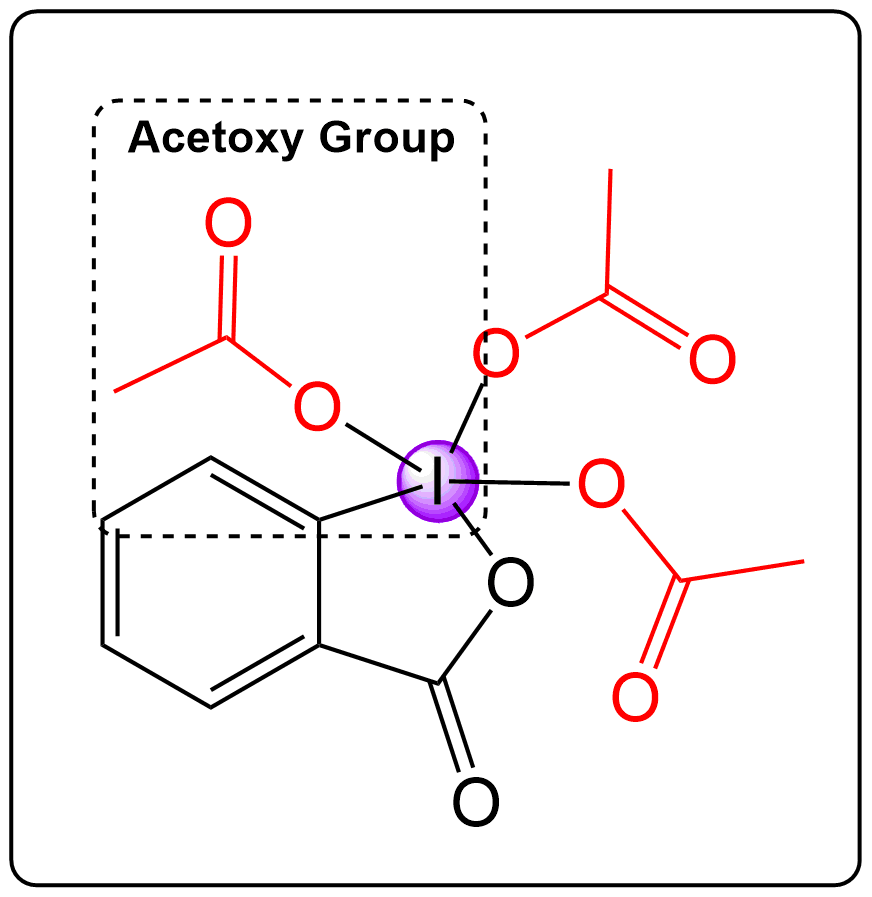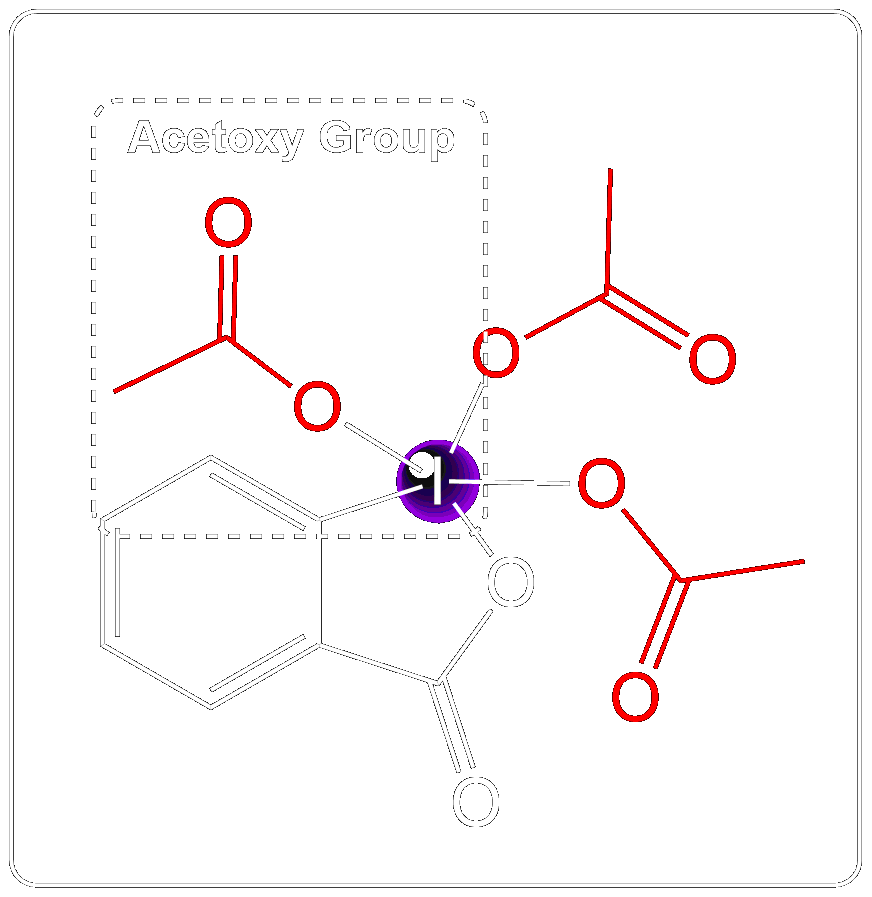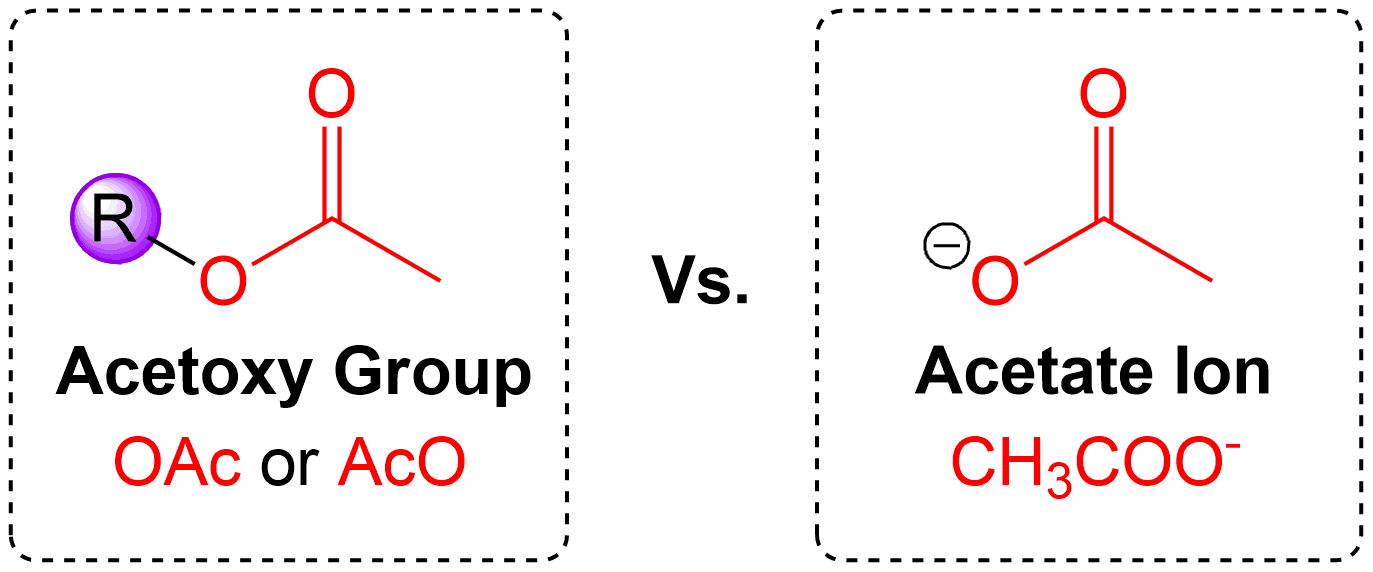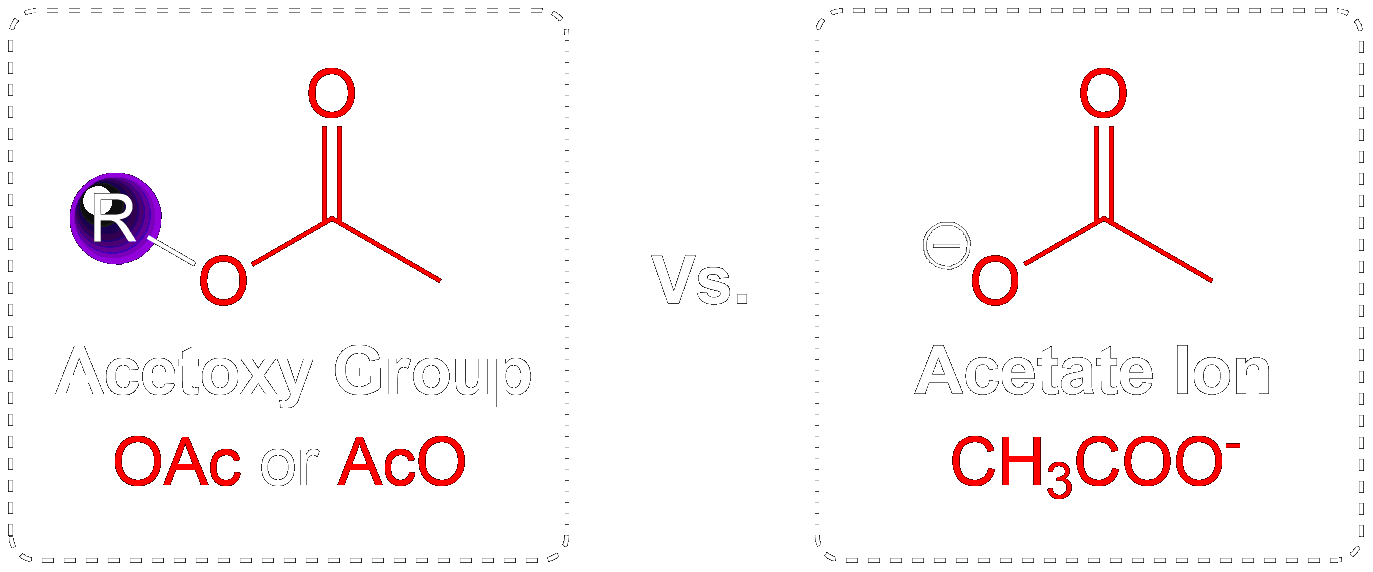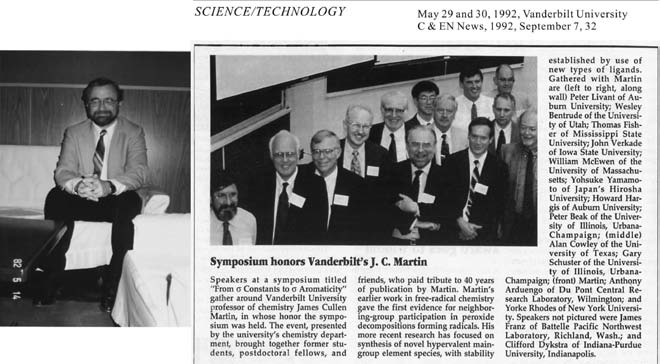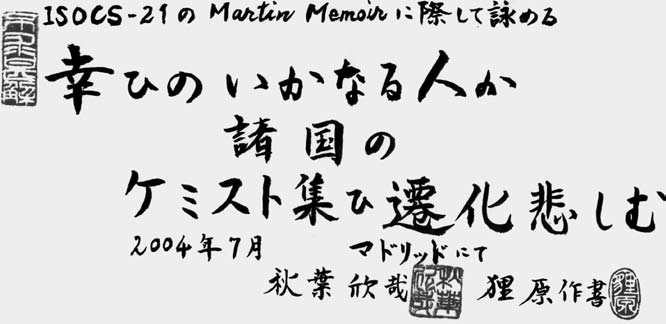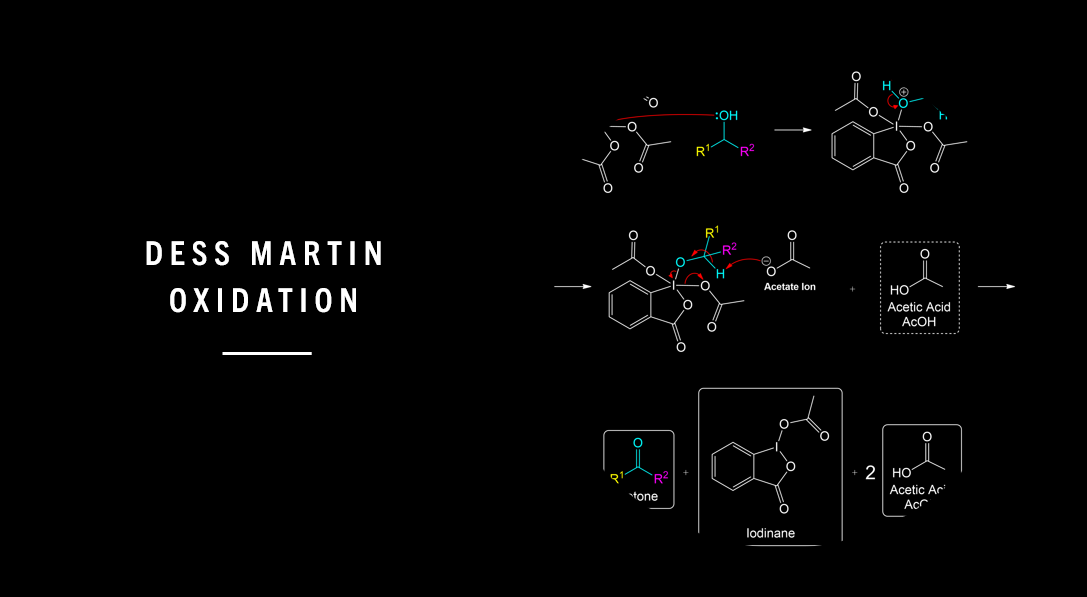
 The Dess-Martin oxidation, developed by Dr. J.C Martin and his doctoral student Daniel Benjamin Dess, is a method used to oxidize primary alcohols to aldehydes and secondary alcohols to ketones using the Dess-Martin periodinane (DMP), a hypervalent iodine compound. This reagent is known for its mild conditions, high selectivity, and efficiency, making it a valuable tool in organic synthesis. 1
The Dess-Martin oxidation, developed by Dr. J.C Martin and his doctoral student Daniel Benjamin Dess, is a method used to oxidize primary alcohols to aldehydes and secondary alcohols to ketones using the Dess-Martin periodinane (DMP), a hypervalent iodine compound. This reagent is known for its mild conditions, high selectivity, and efficiency, making it a valuable tool in organic synthesis. 1
Oxidation Variations
Here you can find the various types of Oxidation conditions and reagent combinations that utilize Dess Martin Oxidation.- Without Water
- With Water or Wet DCM
- With IBX in DMSO/Other Solvents

 In the original paper “Readily Accessible 12-I-51 Oxidant for the Conversion of Primary and Secondary Alcohols to Aldehydes and Ketones.” by Dess & Martin (1983), they discovered a novel and efficient reagent, periodinane 2 (DMP), used to convert primary alcohols to aldehydes and secondary alcohols to ketones. 1This was performed without the usage of water which was reported to accelerate the rate of oxidation. However, the mechanism is slightly modified in comparison the oxidation with water. 1 2
In the original paper “Readily Accessible 12-I-51 Oxidant for the Conversion of Primary and Secondary Alcohols to Aldehydes and Ketones.” by Dess & Martin (1983), they discovered a novel and efficient reagent, periodinane 2 (DMP), used to convert primary alcohols to aldehydes and secondary alcohols to ketones. 1This was performed without the usage of water which was reported to accelerate the rate of oxidation. However, the mechanism is slightly modified in comparison the oxidation with water. 1 2Full Articles on the Variations
Use these to explore detailed articles on the variations.Dess-Martin Periodinane
Periodinane 2, also known as Dess-Martin Periodinane (DMP), was originally derived from 2-iodobenzoic acid and exhibited remarkable efficiency and selectivity. It was reported that DMP was soluble in other solvents such as in hexane or ether were deemed sparingly soluble. Additionally, it was deemed very soluble in dichloromethane, chloroform and acetonitrile. Dichloromethane (DCM) was reported as the primary solvent used as stated by Dess & Martin (1983).Dess Martin Periodinane (DMP) and Dichloromethane (DCM).
Dess-Martin Periodinane (DMP) has three acetoxy groups bonded to the central iodine atom. DMP is highly soluble in DCM which makes DCM, the ideal solvent to use.
Reagent Variations
You may see different variations on how DMP is written out. The OAc group (Acetoxy) is a functional group you’ve seen before. The two Dess-Martin Periodinane structures depicted here are the same compound, shown in different notations and with varying ring structures.Variations of the Dess-Martin Periodinane.
Note: The Acetoxy group has been shortened. However an image reference has been provided to show what it looks like.
Acetoxy group highlighted in the full-form version of DMP alongside the hypervalent Iodine centre.
The Acetoxy group has been shortened, with the reference image visualizing this change.
Acetoxy Group vs Acetate Ion
Understanding the distinction between the acetate ion and the acetoxy group is crucial in grasping the chemical behavior and reactivity of molecules like DMP. While the acetoxy group is part of the structure of DMP, it becomes an acetate ion upon leaving the molecule during the oxidation reaction, playing the as role as a good leaving group to become a stable, negatively charged ion.Differences Between Acetoxy Group and Acetate Ion.
Here are the essential distinctions to understand.
| Acetoxy Group (OAc) | Acetate Ion (CH₃COO⁻) | |
|---|---|---|
| Definition | The OAc group (acetoxy) is a familiar functional group consisting of an acetyl group (CH₃CO) bonded to an oxygen atom. | The acetate ion is a charged particle with a negative electrical charge, formed when an acetoxy group is expelled and loses a hydrogen atom. |
| Role in DMP | In DMP, three acetoxy groups are bonded to the central iodine atom, making them part of the larger molecule. | Has no role in DMP itself. |
| Formation & Notation | R-OAc, where R represents the rest of the DMP molecule. | In reactions, when the OAc group is expelled from DMP, it becomes an acetate ion (CH₃COO⁻), carrying a negative charge as it takes an extra electron pair. |
Reagent Preparation

 The preparation of Dess-Martin Periodinane (DMP) involves two key steps:
The preparation of Dess-Martin Periodinane (DMP) involves two key steps:
Initial Treatment
Product Formation
Reagent Facts
DMP is easy to prepare, remains stable under proper storage conditions and is environmentally friendly, producing benign by-products compared to toxic chromium-based oxidizers which often required time-consuming filitration procedures. 1 2 3Reagent Resources
Due to the variations in data such as molecular weight, melting point, etc., reported on the Dess-Martin Periodinane across various accredited databases, here are some reagent resources you can use to find more reagent data from specialized sources.ChemSpider Entry
PubChem Entry
Tribute to Dr. James Cullen Martin
Photo taken at the author’s office in Hiroshima and that of J.C. Martin Symposium at Vanderbilt reported in C & EN News.
Courtesy of Akiba (2006).
Personal Life
Martin’s personal life was as rich as his professional one. He was born on January 14, 1928, in Dover, Tennessee, and served in the US Army from 1946 to 1950. During his service, he spent time in Kyoto, Japan, as a cultural liaison after World War II. 5 Known for his gentle and generous character, Martin balanced his demanding career with a strong commitment to his family. He married June E. Martin, an occupational therapist, and together they had five children. 5 His son, Professor Joseph V. Martin, now at Rutgers University, recalls his father’s dedication both at home and in his professional life. Martin passed away on April 20, 1999, in Tampa, Florida, but his legacy continues through his family and the countless chemists he inspired. 5 This Waka was prepared and written by the author for the ISOCS-21 Conference in Madrid in July 2004, in memory of Professor James C. Martin. A Waka is a traditional Japanese short poem consisting of 31 phonetic characters. This is based on a well-known Waka in the Man’yōshū, the oldest collection of Waka, which is supported by the Emperor. The Japanese reading is shown in the Romanized form, followed by a translation. 5 JP Translation:幸いのいかなる人か諸国の化学者集い千家悲しむ
Sakiwai no ikanaru hito ka morokuni no kemisuto tudoi sennge kanashimu. EN Translation:
What a happy and beloved person he was! Hundreds of chemists from many countries gather to mourn him and admire his accomplishments in chemistry. Rest in Peace,
Dr. J.C. Martin
References
- Dess, D. B.; Martin, J. C. Readily Accessible 12-I-51 Oxidant for the Conversion of Primary and Secondary Alcohols to Aldehydes and Ketones. J. Org. Chem. 1983, 48, 4155–4156. DOI: 10.1021/jo00170a070
- Meyer, S. D.; Schreiber, S. L. Acceleration of the Dess-Martin Oxidation by Water. J. Org. Chem. 1994, 59, 7549–7552. DOI: 10.1021/jo00103a067
- Frigerio, M.; Santagostino, M. A mild oxidizing reagent for alcohols and 1,2-diols: o-iodoxybenzoic acid (IBX) in DMSO. Tetrahedron Lett. 1994, 35, 8019–8022. DOI: 10.1016/0040-4039(94)80038-3
- University of Illinois Archives, “Martin, James C.” Available at: https://archon.library.illinois.edu/archives/index.php?p=creators/creator&id=1043. Accessed June 29, 2024.
- Akiba, K.-y. Memoirs of Professor James Cullen Martin. Phosphorus, Sulfur, and Silicon 2006, 181, 1201–1215. DOI: 10.1080/10426500500326321












